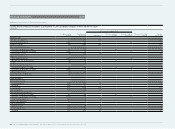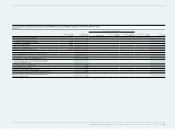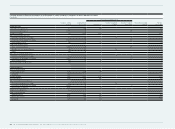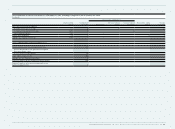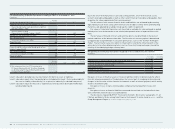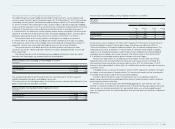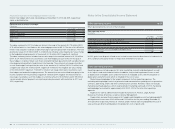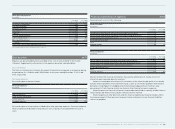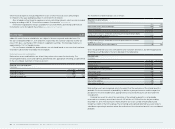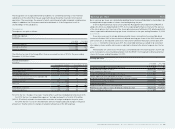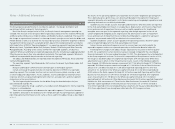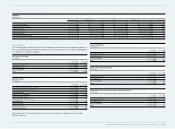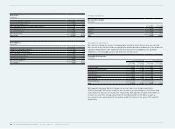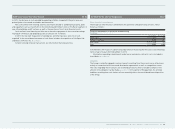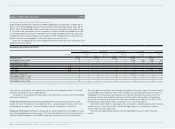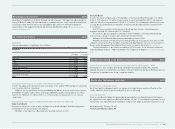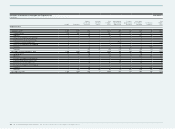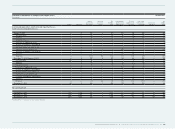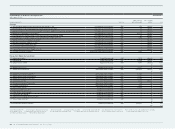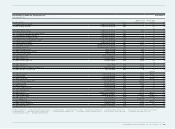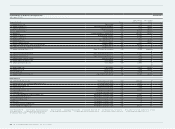Reebok 2010 Annual Report Download - page 222
Download and view the complete annual report
Please find page 222 of the 2010 Reebok annual report below. You can navigate through the pages in the report by either clicking on the pages listed below, or by using the keyword search tool below to find specific information within the annual report.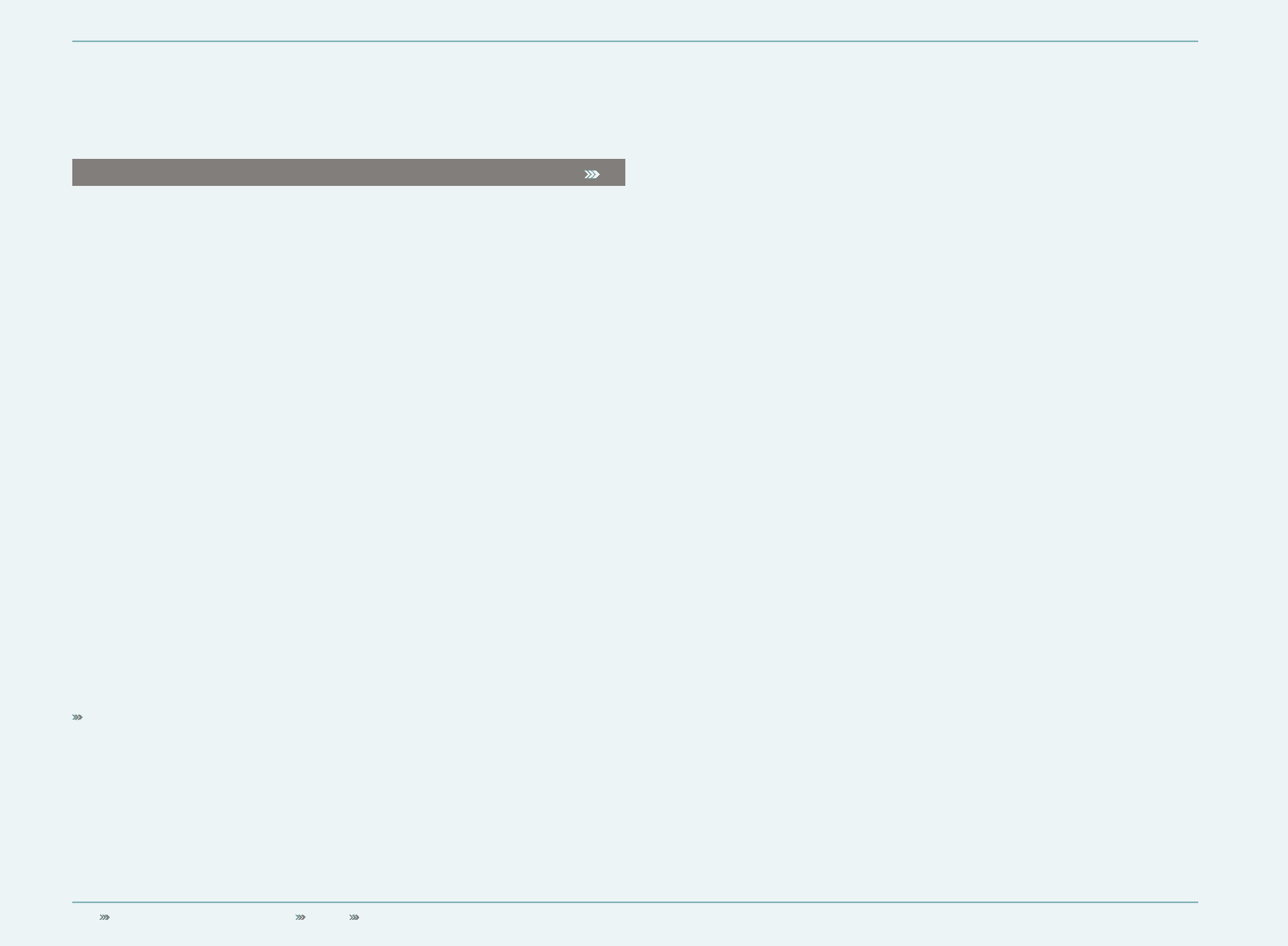
218 Consolidated Financial Statements Notes Notes – Additional Information
Notes – Additional InformationNotes – Additional Information
Segmental information 35
The Group operates predominantly in one industry segment – the design, distribution and
marketing of athletic and sports lifestyle products.
Due to the Group’s reorganisation in 2009, the Group’s internal management reporting has
changed. The structure of the Group has been organised according to the two channels Wholesale
and Retail and a joint business model for adidas and Reebok has been established. The reason for
the change in organisational structure is to leverage channel synergies across both the adidas and
Reebok brands as well as to facilitate the sharing of best practices and further alignment of brand
management to drive long-term sustainable growth. Against this background and in accordance
with the definition of IFRS 8 “Operating Segments”, six operating segments have been identified:
Wholesale, Retail, TaylorMade-adidas Golf, Rockport, Reebok-CCM Hockey and Other Centrally
Managed Brands. According to the criteria of IFRS 8 for reportable segments, the business
segments Wholesale and Retail are reported separately while the remaining are aggregated under
Other Businesses due to their only subordinate materiality. The reportable segments Wholesale
and Retail correspond with the presentation in the internal reporting.
The adidas and Reebok brands are reported under the segments Wholesale, Retail and Other
Centrally Managed Brands.
The operating segment TaylorMade-adidas Golf contains the brands TaylorMade, adidas Golf
and Ashworth.
Rockport and Reebok-CCM Hockey were formerly part of the Reebok segment.
Certain centralised Group functions do not meet the definition of IFRS 8 for a reportable
operating segment. This includes functions such as central treasury, global sourcing as well
as other headquarter departments. Assets, liabilities, income and expenses relating to these
corporate functions are presented together with other non-allocable items and intersegment
eliminations in the reconciliations.
The chief operating decision maker for the adidas Group has been defined as the joint
Executive Board of adidas AG.
Information about the Group’s segments, in accordance with Management’s internal reporting
structure, is outlined below.
There are no intersegment sales between the reportable segments. Transactions between
the segments are based on the dealing-at-arm’s-length principle. Accounting policies applied for
reporting segmental information are the same as those used for the adidas Group as described in
Note 2.
The results of the operating segments are reported in the line item ”Segmental operating profit”.
This is defined as gross profit minus costs directly attributable to the segment or the group of
segments (primarily sales and logistics costs) before marketing working budget expenditures and
operating overhead costs not directly attributable.
Segmental assets include accounts receivable and inventories. Only these items are reported
to the chief operating decision maker on a regular basis. Depreciation, amortisation, impairment
losses and reversals of impairment losses as well as capital expenditures for tangible and
intangible assets are part of the segmental reporting, even though segmental assets do not
contain tangible and intangible assets. Depreciation and amortisation as well as impairment
losses and reversals of impairment losses not directly attributable to a segment or a group of
segments are presented under HQ/Consolidation in the reconciliations.
Segmental liabilities contain accounts payable from operating activities. No other liability
items are reported regularly to the chief operating decision maker.
Interest income and interest expenses as well as income taxes are not allocated to the
reportable segments and are not reported separately to the Executive Board of adidas AG.
Following minor changes to the adidas Group’s organisational structure in the first quarter
of 2010, the assignment of certain functions has been changed compared to the consolidated
financial statements for the year ending December 31, 2009. This development has a limited effect
on the Group segmental structure. To ensure full comparability of Group financial results in 2010,
the Group has decided to adjust the segmental reporting for 2009 retrospectively. While these
adjustments have no effect on total Group financial results, results of the individual segments
have changed. 2009 Wholesale revenues now amount to € 7.164 billion (instead of € 7.174 billion
reported). 2009 Retail revenues remain unchanged at € 1.906 billion. Sales of Other Businesses
amount to € 1.293 billion (instead of € 1.283 billion reported). Operating profit for 2009 now
amounts to € 2.342 billion in the Wholesale segment (instead of € 2.346 billion reported) and
€ 259 million in the Retail segment (instead of € 267 million reported). Operating profit of Other
Businesses now amounts to € 283 million (instead of € 281 million reported). 2009 segmental
assets now amount to € 1.938 billion in the Wholesale segment (instead of € 1.943 billion
reported) and to € 420 million for Other Businesses (instead of € 415 million reported). Segmental
liabilities for 2009 now amount to € 78 million for Other Businesses (instead of € 74 million
reported). Capital expenditure of Other Businesses now amounts to € 23 million (instead of
€ 14 million reported). In the consolidated financial statements for the year ending December 31,
2010, these adjustments have already been reflected in the 2009 comparison base.


